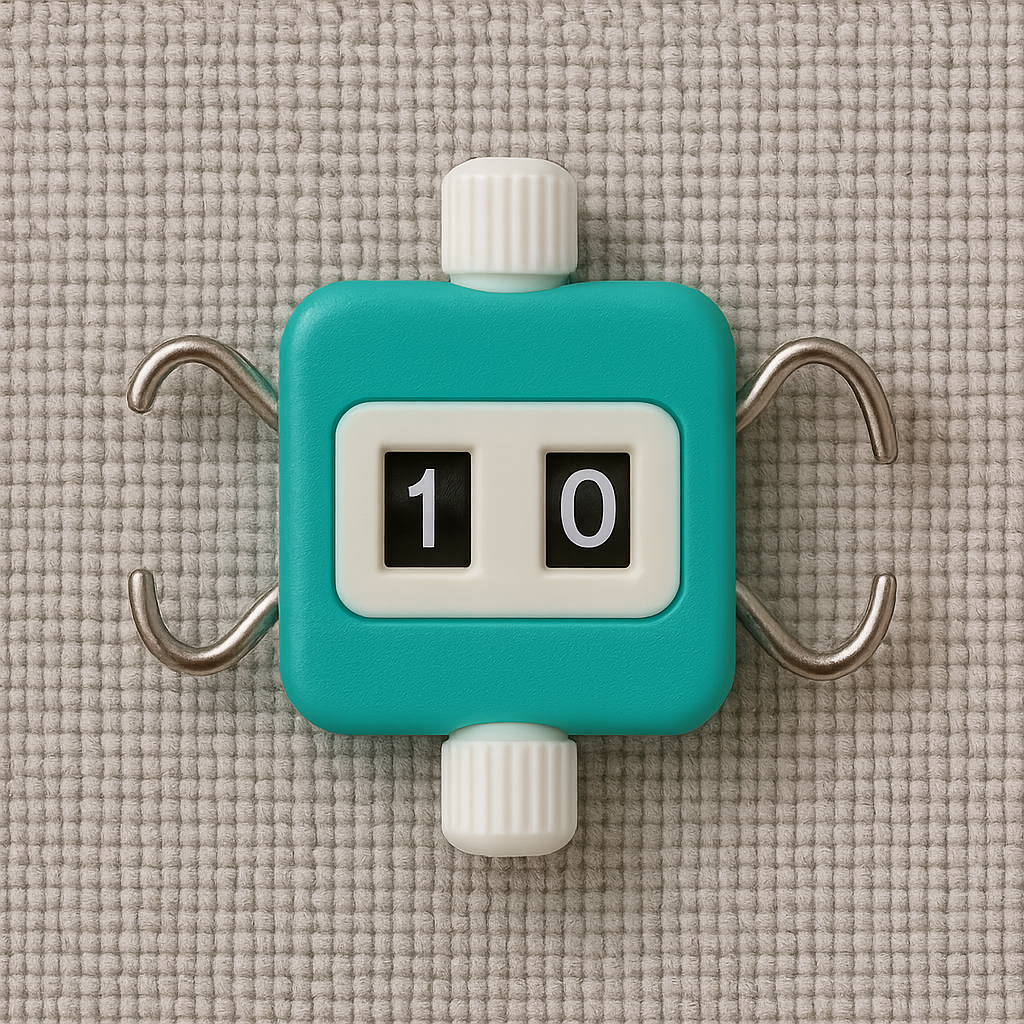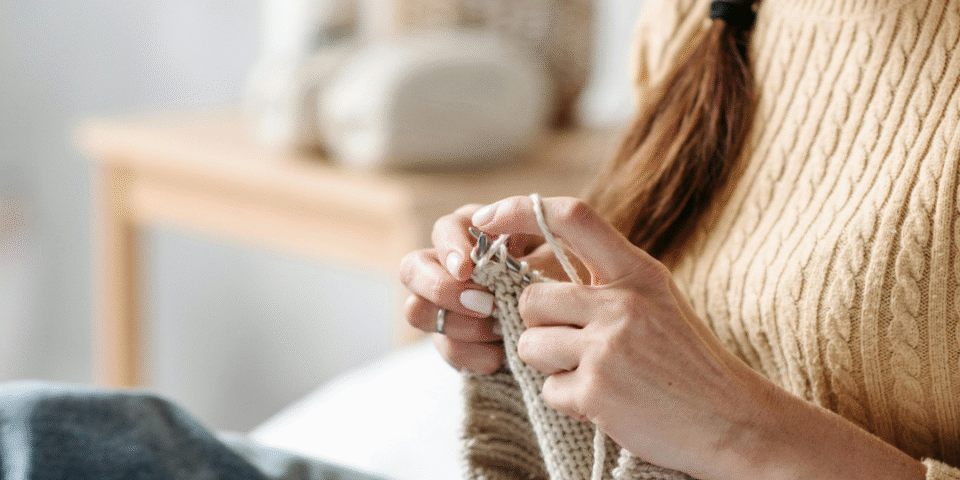Knitting Counter: An Essential Tool for Every Knitter
A knitting counter is a small but mighty tool that no serious knitter should be without. While it may seem like a simple gadget, its purpose is profound: it helps you keep track of your progress, ensuring that your stitch and row counts are accurate. Losing your place in a complex pattern can be one of the most frustrating experiences in knitting, leading to mistakes, extra work, and a potential loss of motivation. A reliable knitting counter eliminates this risk, allowing you to focus on the joy of creating rather than the stress of counting. From tracking a project’s length to keeping a consistent repeat pattern, understanding the various types and uses of a knitting counter is key to mastering your craft.
Knitting designers and instructors consistently emphasize the importance of using a counter. As renowned knitting designer Elizabeth Zimmermann famously said, “Proper planning prevents poor performance.” A modern-day version of this advice for knitters would certainly include the use of a knitting counter. It is the most reliable way to maintain accuracy and prevent the common errors that can derail a project. Whether you’re a beginner struggling to keep track of a simple scarf or an experienced knitter tackling a complex lace shawl, a knitting counter is your most trustworthy ally.
The Evolution of the Knitting Counter
The concept of a knitting counter has evolved significantly over time, from simple mechanical devices to sophisticated digital tools. Understanding these different types can help you choose the best knitting counter for your needs and personal style.
1. Manual Knitting Counters
These are the traditional, old-school counters that many knitters grew up with. They are simple, durable, and reliable.
- Click-and-Turn Counters: These are small, tactile plastic or metal counters that you manually click with a button or turn a dial to advance the count. They come in various forms, including those that attach to the end of a knitting needle or those worn like a ring. A classic example is the barrel-shaped counter that you slide onto your needle. This is a simple and effective knitting counter for beginners.
- Tally Counters: A slightly more advanced version, a tally counter is a handheld device that looks a bit like a small stopwatch. You press a button for each row. While they are not specifically a knitting counter, they are often used by knitters for their reliable mechanism and ergonomic design.
- Physical Tally Sheets: For complex patterns, many knitters prefer the tried-and-true method of a printed sheet. You can create a simple table and tick off each row as you complete it. This method provides a tangible record of your progress and can be a lifesaver for intricate lace or cable patterns.
2. Digital Knitting Counters
Digital technology has brought a new level of convenience and sophistication to the knitting counter.
- Handheld Digital Counters: These are small, electronic devices that display the row count on a screen. You press a button to advance the count, and many have a lock function to prevent accidental presses. They are often lightweight and have a long battery life, making them an excellent modern knitting counter.
- Knitting Apps: The most modern and versatile form of knitting counter is the mobile app. Many knitting apps, available for both iOS and Android, offer a comprehensive suite of tools. They allow you to track multiple projects, add notes, and even include digital versions of your patterns. Using an app as a knitting counter means you always have it with you, as long as you have your phone. You can find highly-rated apps for this purpose on app stores, such as the Row Counter app for your iOS device.
Why a Knitting Counter Is More Than Just a Number
The benefits of using a knitting counter extend far beyond simply counting rows. It is a tool for accuracy, efficiency, and confidence.
- Ensuring Pattern Accuracy: Most knitting patterns rely on precise row counts for shaping, color changes, and stitch repeats. Forgetting to count can lead to a garment with mismatched sides or a lace pattern that doesn’t align correctly. A knitting counter ensures your finished project matches the designer’s intent.
- Tracking Progress: Seeing the number on your counter steadily increase is a powerful motivator. It provides a tangible measure of your hard work and can help you push through challenging sections of a pattern. This makes a knitting counter an essential mental tool as well as a physical one.
- Managing Complex Projects: When you’re working with multiple techniques—such as cables and lace—or a project with different sections, a knitting counter helps you manage the complexity. For instance, you can use it to track when to decrease for a sleeve or start a new colorwork chart. For more information on how to read and manage complex patterns, you can check out this helpful guide on reading a knitting pattern on the Lion Brand Yarn blog.
- The Go-Anywhere Tool: A small, portable knitting counter allows you to take your project with you and work on it whenever you have a free moment, without worrying about losing your place. This makes knitting an ideal portable hobby.

Best Practices for Using a Knitting Counter
Using a counter is easy, but using it effectively requires a bit of discipline. Here are some tips to get the most out of your tool.
- Click at the Same Time: Make it a habit to click your knitting counter at the same point in every row. For example, click it right after you finish a row or right before you start a new one. This consistency prevents double-counting or forgetting to count altogether.
- Set Reminders: For long rows, you can use a stitch marker at key points (e.g., every 50 stitches) to help you keep track and prevent mistakes. This is particularly useful when you need to put your knitting down in the middle of a row.
- Integrate It into Your Workflow: Make using the knitting counter an automatic part of your knitting rhythm. After a few projects, it will become second nature, and you won’t even have to think about it. For a deeper discussion on improving your knitting process, explore this knitting community forum on Ravelry.
Frequently Asked Questions (FAQs)
How do I use a knitting counter?
Most counters are straightforward. For a manual counter, you either press a button or twist a dial after each row you complete. For a digital counter or app, you simply tap the screen. It’s important to set the counter back to zero at the beginning of each new project.
What is a stitch marker knitting counter?
A stitch marker counter is a small, lightweight counter that you can clip directly onto your knitting. It’s a convenient option because it stays with your project and is less likely to get lost than a separate handheld device.
Can I use a knitting counter for other crafts?
Yes. While the term is most common in knitting, a row counter can be used for any craft that involves repeated rows, such as crochet, loom knitting, or weaving. The principles of tracking progress and ensuring accuracy apply to many fiber arts.
The Knitting Counter and Mindful Crafting
The act of clicking a knitting counter after each row can be a form of mindful meditation. In a world full of distractions, this simple, repetitive action brings your focus back to the present moment. It’s a tangible way to mark your progress, transforming a seemingly small task into a series of small, satisfying victories. Using a knitting counter is a part of a larger, more intentional approach to crafting—one where you are fully present in your work, appreciating the slow, deliberate process of creation. It’s about finding joy not just in the finished product, but in every single stitch that gets you there.
This mindful approach to crafting is closely tied to the broader philosophy of finding balance and intentionality in all areas of life. If you’re interested in exploring this further, you can find inspiration and practical advice on the art of slow living by visiting this blog post. The article delves into the idea that simple, thoughtful actions can lead to a more peaceful and fulfilling existence, showing how hobbies like knitting can be a part of a larger, more beautiful philosophy.

